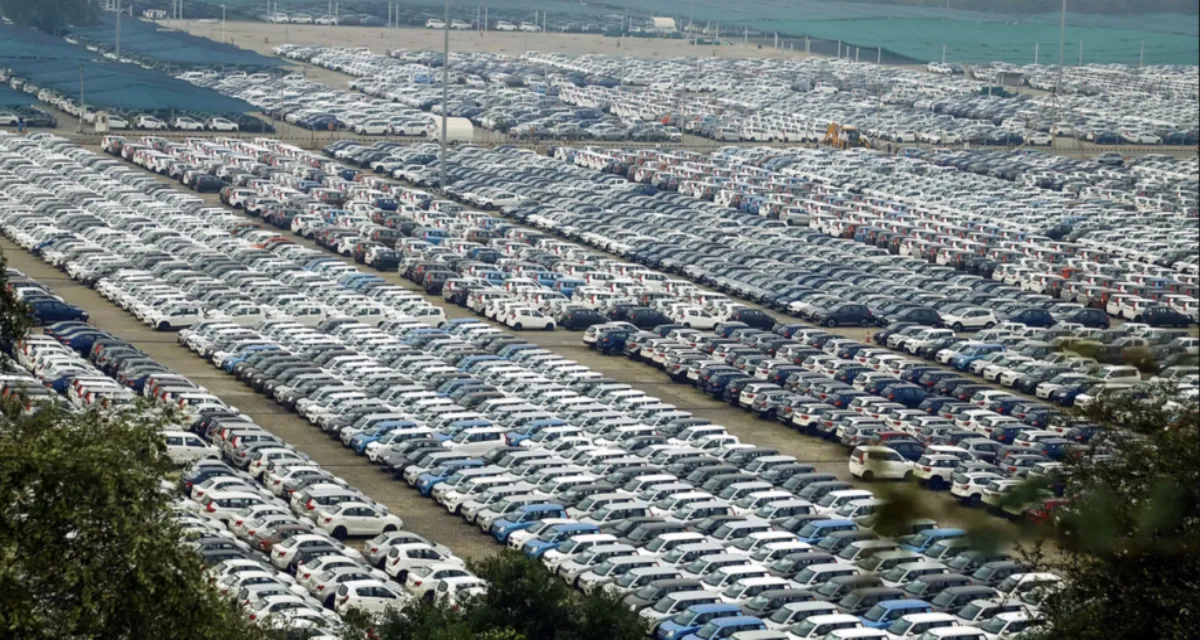
India’s Auto Industry Faces Challenge: ₹73,000 Crore Worth of Unsold Cars

India’s Auto Industry Faces Challenge: ₹73,000 Crore Worth of Unsold Cars
The current Indian Automotive sector seems facing challenges worth ₹73,000 Crore. Yes, you read it right, it is indeed ₹73,000 Crore! The number of cars that go unsold is bundling up each month despite festive seasons. Either the economy or business strategy is failing but the sales are dripping all-time low. Below we have discussed the issue, cause, and probable solution:
Despite the anticipation of increased sales during the upcoming festive period, dealerships across India are grappling with an unprecedented inventory of unsold vehicles. According to the Federation of Automobile Dealers Associations (FADA), the stockpile has now reached over 7 lakh units, translating to about ₹73,000 crores in value. This surplus of vehicles is putting immense pressure on dealers, forcing some to consider scaling back their operations and slowing down production.
One of the primary reasons behind this growing inventory is the significant slowdown in sales. Factors such as the Lok Sabha elections and erratic weather patterns, including extreme heat followed by heavy rains, have negatively impacted consumer demand. As a result, the average inventory holding period for dealerships has increased from 65-67 days in early July 2024 to around 70-75 days, which is nearly equivalent to two months of sales.
This situation has created a challenging environment for both dealerships and automakers. Dealerships, in particular, are feeling the strain of maintaining such large inventories. With sales not matching up to the production levels, dealerships are left with little room to breathe financially. The Society of Indian Automobile Manufacturers (SIAM) estimates the unsold inventory to be around 4 lakh units, a figure slightly lower than FADA's estimate but still substantial.
Automakers, recognizing the severity of the situation, are beginning to take measures to address the issue. Maruti Suzuki, India’s largest car manufacturer, has already announced plans to reduce production in response to the lower sales figures. The company has seen a marked decline in demand across its portfolio, particularly in its SUV and MPV segments. Models like the Ertiga, Brezza, and Jimny have experienced a significant drop in sales, despite aggressive discount schemes and incentives offered at both Nexa and Arena showrooms.
The first four months of the current financial year have been particularly challenging for Maruti Suzuki. Although the company managed to increase production by 7.4%, sales only saw a marginal improvement of 1.2%. This mismatch between production and sales has forced the automaker to reconsider its strategy and adjust its output to avoid further inventory build-up.
As the festive season draws near, there is hope that the increased consumer activity might help reduce the surplus inventory. However, the road to recovery is not without its challenges. Dealerships are likely to require extended credit facilities to manage their finances during this period. At the same time, automakers may need to continue adjusting their production schedules to align more closely with market demand.
The industry is also likely to see a shift towards better inventory management practices. Automakers and dealerships will need to collaborate more closely to ensure that production levels are more accurately aligned with sales forecasts. This could involve optimizing sales networks, reducing production volumes temporarily, and offering more targeted incentives to stimulate demand.
Overall, The current situation serves as a wake-up call for India’s automotive industry. The massive inventory of unsold cars, valued at ₹73,000 crores, highlights the need for more agile and responsive business strategies. While the festive season offers a glimmer of hope, the industry must take proactive steps to prevent a recurrence of such a situation in the future. By focusing on better inventory management, closer collaboration between automakers and dealerships, and a more flexible approach to production, the industry can navigate these challenging times and emerge stronger.
Also Read: